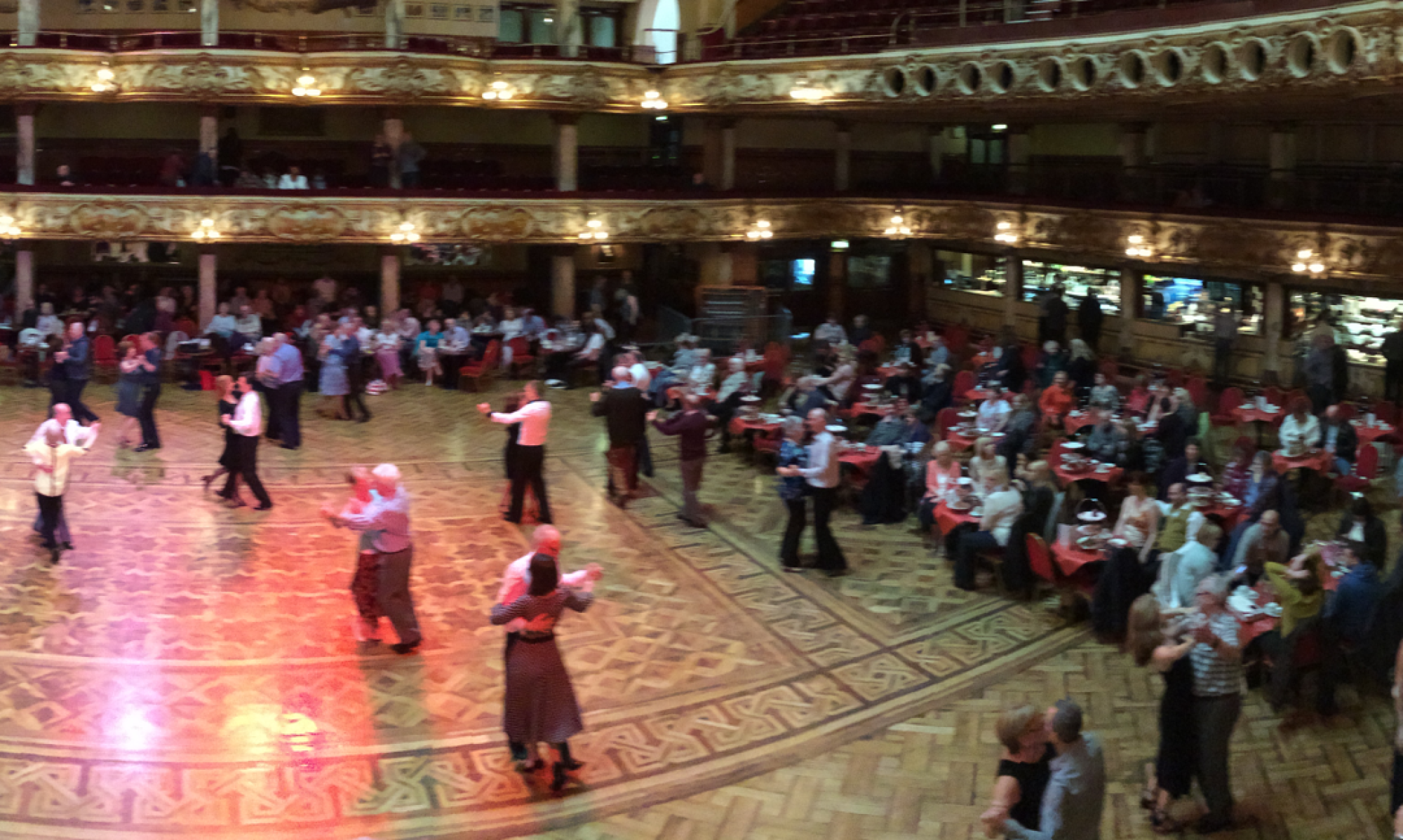Now that we’ve a general idea of how to get the most from your dance practice, let’s look at three common issues all dancers face and how to resolve them by asking questions and experimenting.
To improve your dancing without an instructor, you must be patient and observant of what feels comfortable, balanced, and smooth… and what does not.
Continue reading “How to Improve Your Dancing Without Help, Part 2”
Wrapping up our theme on getting more dances and dance partners when social dancing, it’s time to take a look at what actually happens during the dance itself. If you score an awesome dance partner, you’ll want to get more dances from your new friend, right? Then here’s the secret: make sure they have as much fun as you do.
Continue reading “Scoring More Social Dances From the Same Partner”
Ah, the spot turn – easily one of my favourite movements in all of partner dancing. Last time, we took a look at the underarm turn as the informal ‘spot turn’. Now it’s time to look at the true spot turn; that is, a couple turning together around a common point. Don’t know what I mean? Check this out:
Continue reading “Dance Turns 2: Leading / Following the Spot Turn”
Welcome to one of the most overlooked elements in beginner ballroom dancing – and one of the most important. Step on your partner’s feet a lot? Feel off balance frequently? Having trouble connecting with your partner, or feeling the lead or follow? You can blame most of that on a poor ballroom frame.
The ballroom frame has many definitions, but my favourite is one quoted teacher and friend, Arpad Raymond:
Continue reading “The Basics of Ballroom Dance Frame”
Nothing jars you out of you a wonderfully flowing dance movement faster than an unexpected bump from behind. It’s just one of the things a leader must watch out for on the social dance floor, along with stepped-on toes, elbows to the face, mule-kicks to the shin, and bruised egos. Yet most collisions on the dance floor can be avoided, with a little awareness and the right instincts. The following 6 techniques will teach you the unspoken rules of dance etiquette, so you can take care of yourself and your partner on a crowded dance floor. Continue reading “6 Techniques to Avoid Collisions on the Dance Floor”
We’ve all been there. You’re out on the social dance floor, trying to move with your partner, and for whatever reason it’s just not clicking. Maybe you’ve got a full compliment of steps you can’t wait to try out, but your follower seems to be completely ignoring you. Or maybe you’ve practiced following every dancer in your group class, but this guy won’t even lead half of them (and you can’t feel the lead for the other half). What’s a dancer to do? Continue reading “Help! My Partner Can’t Lead (or Follow)”
Previously, we discussed some of the assumptions leaders make that can hold back their ability to effectively connect with their partner. Now it’s time to look at the techniques that actually help you get your partner from point A to point B – and keeping her smiling on the way.
Continue reading “Leading VS Following – Part Four”
Last time, we explored how a follower can better connect and move with her partner. Now leaders, it’s your turn. We’ll start by debunking some of the assumptions and myths that mislead your leading (pun intended). Once these are clear, you will be free to start training with good habits instead of struggling to unlearn bad ones.
Continue reading “Leading VS Following – Part Three”
In the last article, we tackled the psychological reasons why ‘following’ in a ballroom dance may not be as bad as we think it is. Now, we look at specific techniques that help us connect and respond to our leader. Then we will finish off with a learning strategy to polish these techniques with minimal frustration.
Continue reading “Leading VS Following – Part Two”
‘I’m the leader, you’re the follower.’ Does that sentence make you want to grind your teeth? You’re not alone. Many people hate having to ‘surrender’ to another person to make the dance work. What they usually don’t realize is that the ‘follower’ has a power of her own. The big moves might be mostly up to the leader, but the follower adds the embellishments that make up much of the dance’s personality.
In this article, we’ll change the way we look at ‘leaders’ and ‘followers’ on the ballroom dance floor. And find out the playing field is a lot more level than most people realize. Let’s start by looking at how the definitions have changed over the years.
Continue reading “Leading VS Following – Part One”
